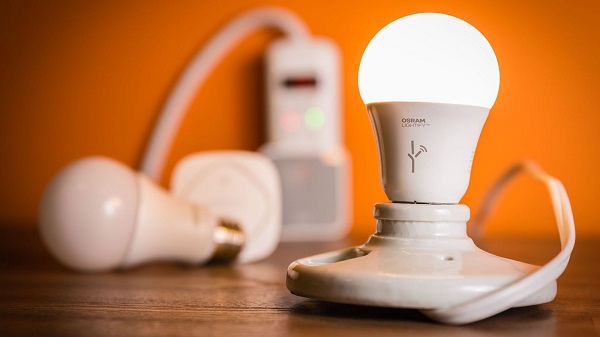LED lighting has come a long way from its initial days. Today it is combined with digital lighting controls to create smart lighting solutions that dramatically save on energy consumption and the related operating costs. But in addition to these savings, organizations deploying smart lighting solutions are achieving impressive results in other ways. Let’s take a look at a few examples.
 |
|
(Image: Osram) |
Improve Comfort, Productivity and Safety in the Workspace
All spaces are not created equal. Some are inherently not as comfortable to work in as others. A flexible lighting control system can have a major impact by providing a comfortable and productive visual environment.
The AAON, Inc. manufacturing facility in Tulsa, Oklahoma, has uneven ceiling heights across their workspace. Until recently, this had resulted in inconsistent light levels—a problem that affected worker comfort, productivity and even safety. Implementing a light management system (LMS) with a task tuning strategy between 45 and 70% of maximum light output, created a uniform level of light across the facility. The strategy provides a more comfortable and safe space for employees and it is expected to help boost productivity as well.
Directly Impact Critical Decision-making and Streamline Workflows
Lighting is a critical component in every space. And easy access to the control of that lighting can help influence decision making and the pace of those decisions. Innovative features such as personalized lighting scenes are enhancing the way staff views their work and the way they perform their tasks.
In the special procedures room at Bryan Medical Center, Lincoln, Nebraska, radiology scans are read by staff in different pre-set lighting scenes enabling highly accurate diagnoses. To improve workflow, radiologists use a foot pedal to switch between preset lighting scenes for hands-free viewing—a less-cumbersome option than traditional switches. Additionally, the lighting control system monitors a set of contacts on an X-ray machine which automatically triggers the lights to a custom scene when the machine is in X-ray mode. It then reverts to the original scene when it goes out of X-ray mode, saving staff the time and effort of manually adjusting the lights.
Integrate Best-in-Class User Experience
Lighting is a personal thing. A light that is too bright for one person may not be bright enough for another. With a lighting control system, staff are able to control lighting to meet their particular needs and preferences. Through intuitive control interfaces such as a desktop or mobile application, it is easy and convenient for workers to control the lighting in their workspace.
Robert L. Preger Intelligent Workplace, Carnegie Mellon University, Pittsburgh, Pennsylvania, is a research lab that studies the integration of different technologies and their impact on human comfort. A lighting control system is serving as the backbone for research on user interfaces while reducing energy consumption. Occupants can control lighting in the open space as well as assign and change zones quickly and easily. Easy-to-use touch screen display panels are used to set up scenes and control the lighting in different areas.
Customize Lighting to Meet Unique Needs of Specific Demographics and Tasks
Occupants of buildings vary as do the tasks the occupants perform. And the requirements for lighting those tasks can be very different. Office workers certainly have different lighting needs than factory workers, which differ from students, and from doctors. Lighting control systems provide the ability to personalize and control lighting in an office or classroom—right down to the individual task level. Using features such as personal scene settings allow an individual to adjust lighting levels in their space to their personal preferences.
The Hurst-Euless-Bedford Independent School District (ISD), Bedford, Texas, is an example of an educational facility leveraging an advanced lighting control system to enhance the learning environment and education process. The district offers customized lighting for each classroom based on their specific tasks and unique requirements. For instance, lighting is programmed in the pre-kindergarten classroom to accommodate nap time. All lights are shut off while the children are resting except those over the teacher’s desk so that she can continue to work. Additionally, a special education classroom leverages a mild lighting setting to protect students from overstimulation.
The power and flexibility of advanced lighting control systems continue to provide vast energy savings and increased operational efficiencies. But these smart connected systems are doing so much more. Today’s intelligent lighting control systems enable customized lighting that is matched to specific user requirements for maximum comfort, satisfaction and productivity. Connected lighting is an essential element in the modern workspace and in smart buildings.
(The article originates from the Osram Digital Lighting Systems Blog.)





 CN
TW
EN
CN
TW
EN






